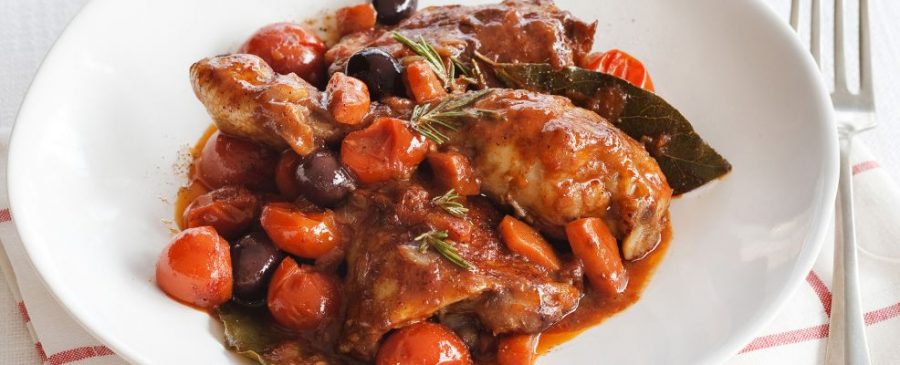Two Sauces (Sugo) for Gnocchi
Gnocchi are often served with a meat-based sauce (sugo) in Rome, with lamb and pork being the most popular. However, you can also serve the gnocchi with a simple tomato sauce (see my recipe here) or even just with butter, sage and shaved Parmigiano (a more Northern Italian combination). My favorite is the recipe with lamb, but some people prefer the one with sausage. Both recipes are below.
Italian Sausage Sauce for Gnocchi
This is a quick recipe that only takes about 30 minutes to prepare, so it’s great if you don’t have much time.
Ingredients
- Italian sausage (pork), preferably made without fennel, 1 sausage per person, chopped into bite-sized pieces
- Extra virgin olive oil
- 1/2 to 1 red onion, chopped (1/2 for 4 sausages, 1 for 8 sausages)
- Handful of fresh basil leaves
- 1 spicy pepper, preferably Calabrese, but Thai or Hawaiian pepper will work
- 250 – 500 grams of Pomì chopped tomatoes
- Freshly grated Parmigiano
Preparation
- Cut the sausages into bite-sized pieces, add the chopped Pomì, and sauté in a just enough olive oil to coat the skillet. Cook for 2 to 3 minutes.
- Add the Pomì chopped tomatoes and a handful of basil and cook on low heat for 15 to 20 minutes.
- In the meantime, put a pot of water on the stove, using the same amount of water that you would use to boil pasta (5 to 6 quarts). Don’t add salt to the water because it will break down the gnocchi. Bring the water to a boil.
- When the sauce is ready, boil the gnocchi. It only takes a minute or two for the gnocchi to cook, so be attentive! As soon as they start to float, they are ready.
- Use a large slotted spoon to remove the gnocchi from the pot and put them into your serving bowls. Top with the sauce and add freshly grated Parmigiano. Serve immediately.
- Buon appetito!
Lamb Sauce (Sugo) for Gnocchi
This is an alternative sugo for gnocchi –my preferred sugo. This recipe takes 2 to 3 hours to prepare, so you may want to prepare it the night before so that you just have to heat it and serve it with your fresh gnocchi.
Ingredients
- 1 pound of lamb shoulder cutlets, you want inexpensive lamb that still has some fat
- 2 tablespoons olive oil
- 1/2 red onion, minced
- 2 whole cloves of garlic, smashed
- 1 handful of Italian parsley, minced
- 1 bunch of fresh basil, minced and divided
- 1/2 cup of white wine
- 500 grams of Pomì chopped tomatoes
- Freshly grated Pecorino cheese
Preparation
- In a large skillet, fry the garlic cloves in olive oil on low heat until they are golden. Remove the garlic from the pan and discard.
- Add the lamb shoulders cutlets and the minced red onion, and stir to combine. Add a handful of minced parsley, and cook on medium heat.
- As soon as the lamb takes color, add a handful of basil leaves, mix, add ½ glass white wine and 1 min later, add the 500 grams of crushed Pomì tomatoes and the rest of the basil. Add salt, lower the heat to the minimum temperature, and cover the pan with just a tiny gap to allow some steam to escape. (I use a wooden spoon under the cover to create the vent).
- Cook on the lowest heat for 2 hours or more, until the meat falls from the bone. Stir again, and your sugo is ready.
- When you are ready to eat, put a pot of water on the stove, using the same amount of water that you would use to boil pasta (5 to 6 quarts). Don’t add salt to the water because it will break down the gnocchi. Bring the water to a boil.
- When the sauce is ready, boil the gnocchi. It only takes a minute or two for the gnocchi to cook, so be attentive! As soon as they start to float, they are ready.
- Use a large slotted spoon to remove the gnocchi from the pot and put them into your serving bowls. Top with the sauce and add freshly grated Pecorino. Serve immediately.
- Buon appetito!












